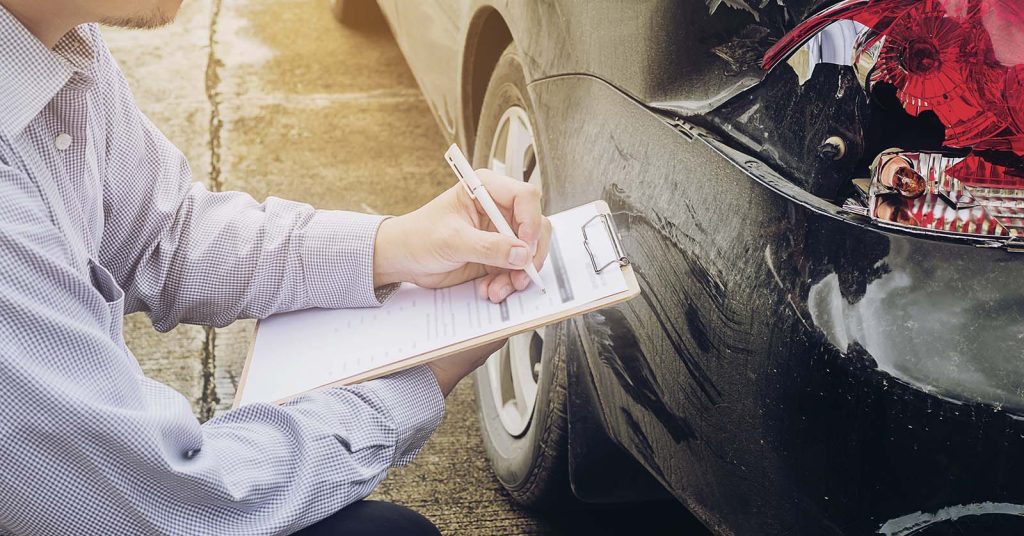When a crash or covered loss happens, the difference between a smooth payout and weeks of frustration is knowing exactly what to do and when. Filing a claim is a sequence: make the scene safe, document what happened, notify the right insurer, provide the information an adjuster needs, and choose how (and where) your car gets repaired or settled. Consumer and regulator guides line up on the core steps: call your insurer promptly, gather evidence, understand which coverages apply, follow the documentation checklist, and keep records of every conversation. We’ll walk you through each step, plus special rules for no-fault states, glass claims, total losses, and third-party claims. Authoritative sources like the Insurance Information Institute (III), the NAIC, state insurance departments, and independent reviewers such as Consumer Reports outline the same playbook you’ll use here.
Key Takeaways
- Report promptly. Policies and states expect quick notice; some deadlines are strict (e.g., 30 days for no-fault medical in NY). Don’t wait.
- Document everything. Photos/video, other driver’s info, witnesses, police report number, and a short written account speed up claims.
- Know who to file with. In at-fault systems, you can file with your insurer (then they subrogate) or the other driver’s; in no-fault states, PIP/MedPay rules apply first.
- Deductibles matter. Collision/comprehensive claims trigger your deductible; liability claims against the other driver typically do not.
- You choose the repair shop. Insurers can recommend networks, but regulators emphasize your right to select where repairs are done. (Confirm in your state.)
Before you file: safety, documentation, and what to collect
Start by making the scene safe and calling emergency services if anyone may be injured. If vandalism, theft, or a serious crash occurred, call the police; many insurers and consumer advisors suggest filing a report because it creates an official record that supports your claim. Take wide and close photos of vehicle positions, damage, roadway, debris, weather, and any traffic signals or signs; capture speed estimates only if you’re certain, and stick to facts. Exchange information: names, phone numbers, driver’s license, license plates, insurance company and policy numbers, and vehicle identification if practical. Ask for contact details from witnesses and note nearby cameras, as video can clarify fault later. Write a brief, time-stamped account while details are fresh; even a few bullet points help an adjuster connect the dots. If the car is drivable, avoid making permanent repairs before the inspection; temporary measures (like taping a window) are fine — keep receipts. For hit-and-run or theft, a police report number is commonly requested during intake. Consumer Reports and III highlight these basics as the best way to avoid “insufficient documentation” delays.
Step-by-step: filing the claim and moving it to resolution
1) Notify your insurer promptly. Call from the scene if it’s safe, or use your insurer’s app/portal once you’re clear. Early notice preserves rights, starts coverage checks, and helps with rentals/towing. III’s claims guide explicitly says to contact your insurance professional “as soon as possible,” even if fault isn’t determined.
2) Share the essentials. Be ready with date/time/location, a short description, other driver(s) and witness info, photos, and the police report number if you have it. Many carriers list this intake checklist; Allstate’s consumer page shows the typical items you’ll be asked for.
3) Understand which coverages apply. Collision covers your car’s crash damage (deductible applies). Comprehensive covers theft, weather, vandalism, and animal impacts (deductible applies). Liability pays others if you’re at fault (no deductible to you). Your adjuster will confirm what’s in force and explain next steps. III and NAIC materials frame the claim around these coverage buckets.
4) Cooperate with the adjuster and inspections. You may be asked for a virtual photo estimate or an in-person inspection. Provide requested documents promptly — license, registration, repair estimates, medical bills for injury claims, and proof of ownership. Quick responses shorten cycle time; CR notes that adjusters move faster when they have complete packets.
5) Choose your repair path. You can use a recommended network shop (often with streamlined estimates/warranty) or your preferred shop; regulators and the NAIC remind consumers that the choice is yours, though processes vary by state. Save all invoices and authorize work only after coverage and estimate approval.
6) Manage rentals and transportation. If you purchased rental reimbursement, ask your adjuster about limits (daily/max) and approved providers before booking. If the other party is clearly at fault and accepting liability, their insurer may cover a comparable rental; availability varies, so confirm in writing. Guidance pages from carriers outline how this is handled on third-party claims.
7) Resolve payment and deductibles. For first-party physical damage, you’ll pay your deductible to the shop or have it netted from the insurer’s payment. If your insurer later recovers from an at-fault third party (subrogation), they’ll usually reimburse your deductible. III’s claims steps and state DOI pages explain this flow.
Who to file with: your insurer, the other driver’s insurer, or PIP/MedPay?
In at-fault (tort) states, you have options. You can file with the at-fault driver’s insurer (a third-party claim), which avoids your deductible but may move more slowly if fault is disputed. Or file with your own insurer under collision for speed, pay your deductible, and let them pursue reimbursement (and your deductible) from the other carrier through subrogation. In no-fault states, your PIP (personal injury protection) generally covers your medical bills and lost wages first regardless of fault, while vehicle damage still follows the collision/comprehensive vs. liability split. Investopedia’s overview and state guidance explain how PIP interacts with timelines and lawsuits; state pages (like New York’s) add specific filing windows and “which insurer first” rules.
Deadlines, state-specific rules, and why “prompt” really matters
Most policies require you to report losses “promptly” or “as soon as practicable,” and some states set hard clocks for certain benefits. For example, New York’s no-fault rules require written notice within 30 days of the accident absent a valid reason for delay. Other departments of insurance publish similar expectations for immediate reporting and theft/vandalism police reports. Missing these windows can delay or jeopardize parts of your claim, especially PIP benefits. If an insurer requests additional information, respond quickly and keep copies; NAIC consumer guides stress that complete documentation avoids common complaint categories like “claim delays” and “insufficient information.” If you hit a stalemate — coverage dispute, valuation disagreement — your state DOI can help explain rights and complaint options.
Total losses, valuations, and repair vs. replace decisions
If repair costs plus salvage value approach your car’s actual cash value, the insurer may declare a total loss. You’ll receive a valuation offer based on comparable vehicles (options, mileage, condition), less your deductible for first-party claims and less any lien payoff to your lender. State DOI explainers (e.g., Illinois) outline total-loss steps and the need to report suspected theft or vandalism immediately. Review the valuation report; if you disagree, provide recent comps and receipts for recent work. Salvage title rules kick in after settlement; your adjuster will explain paperwork and pickup. For newish cars with loans, consider whether you have — or need — gap coverage to bridge any shortfall between settlement and loan balance.
Glass claims, “zero-deductible” states, and quick wins
Comprehensive typically covers glass. Some states waive the deductible for windshield replacement if you carry comprehensive (for example, Florida, Kentucky, and South Carolina), while others let you buy separate full-glass coverage with a lower or zero deductible. File these claims the same way — photos, police report if vandalism — and schedule repair or replacement through your chosen or network provider. Knowing your state’s glass rules prevents surprise out-of-pocket costs for common rock-chip damage.
Third-party claims: if you file with the other driver’s insurer
When the other driver is at fault and you file directly with their carrier, you’re a third-party claimant. You’ll still provide evidence, get an inspection, and receive an estimate. Some insurers provide portals to track third-party claims and rentals. Be aware: their duty is to their insured; if fault is disputed, progress may stall until liability is determined. Many drivers choose to start with their own carrier for speed, then let subrogation sort out reimbursement and deductible payback. Consumer and carrier guides explain both paths; choose the one that best fits your urgency and documentation strength.
Frequently Asked Questions (FAQs)
How long do I have to file a claim?
Policies require prompt notice, and some states set specific clocks (e.g., New York no-fault requires written notice within 30 days). File as soon as possible and ask your adjuster about any state-specific timelines.
Should I file with my insurer or the other driver’s?
If fault is clear and the other carrier is responsive, a third-party claim can avoid your deductible. Filing with your own collision is often faster; your insurer may later recover from the at-fault carrier and reimburse your deductible.
Will my rates go up after a claim?
It depends on fault, claim type, and your insurer’s rating rules. Minor comprehensive losses (e.g., glass) may have less impact than at-fault collision claims. Check your insurer’s surcharge schedule or ask your agent. III discusses premium impacts after claims.
Can the insurer force me to use their repair shop?
No — consumer guides stress you can choose your repair facility, though using a network shop may streamline estimates and warranties. Verify your state’s specific rules.
What if the car is a total loss?
Expect an actual cash value offer based on comparable vehicles, minus your deductible for first-party claims and any loan payoff. State DOI pages outline total-loss procedures and your options if you disagree with the valuation.
Do I need a police report?
Not always, but it can help — especially for theft, vandalism, hit-and-run, or injury claims. Many insurers request the report number during intake. Consumer Reports includes it in their recommended steps.
Sources
- Insurance Information Institute — Claims Filing (auto)
- NAIC — A Consumer’s Guide to Auto Insurance (PDF)
- Consumer Reports — How to File a Car Insurance Claim
- NY Dept. of Financial Services — Filing Claims (no-fault timelines)
- NAIC — Common Claim Complaints (what causes delays)
- Illinois DOI — Total Loss Auto Claims (process overview)
- NerdWallet — How to File a Car Insurance Claim
- NerdWallet — When to File a Car Insurance Claim
- Allstate — What to Expect When Filing a Claim
- Allstate — Third-Party Claims Overview









